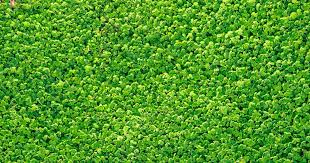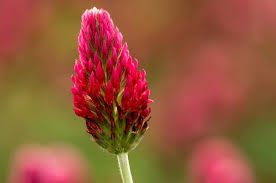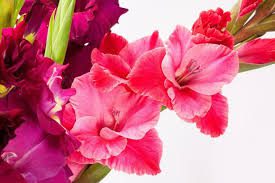Clover Flowers (Trifolium): Complete Growing and Care Guide
Clover flowers, scientifically known as Trifolium, are charming and delicate blooms that grace many fields and gardens with their beauty. These petite flowers belong to the legume family, Fabaceae, and are easily recognizable by their distinctive three-leaf structure, which gives them the name “trifolium,” meaning three leaves.
The most common types of clover are the white clover (Trifolium repens) and the red clover (Trifolium pratense). White clover is often found in lawns, fields, and meadows, spreading its vibrant green carpet dotted with clusters of tiny white flowers. On the other hand, the red clover displays stunning pinkish-purple blossoms that stand tall in grassy areas.
One of the key reasons why clover flowers are beloved by gardeners and nature enthusiasts alike is their incredible ability to attract beneficial insects. Bees and butterflies are particularly fond of the nectar-rich blossoms, making clover a valuable addition to any pollinator-friendly garden. Additionally, these flowers have a fascinating ecological role as they enrich the soil with nitrogen through a process called nitrogen fixation, benefiting surrounding plants.
Apart from their ecological significance, clover flowers have also captured the hearts of people through folklore and symbolism. Throughout history, clover has been associated with luck and good fortune. The rare discovery of a four-leaf clover is considered an omen of extraordinary luck, leading to the popular belief that carrying one brings good fortune. Many cultures regard clover as a symbol of prosperity and protection, making it a cherished motif in various traditions.
Moreover, clover flowers have found practical applications in the realm of herbal medicine and traditional remedies. Red clover, in particular, has been used for its potential health benefits, including as a mild expectorant and a remedy for skin conditions. However, it’s essential to seek advice from a qualified healthcare professional before using any plant or herb for medicinal purposes.
For those who wish to incorporate clover flowers into their landscape, it’s a relatively low-maintenance plant, making it a great choice for both beginner and experienced gardeners. It thrives in well-drained soil and partial sunlight, making it adaptable to various growing conditions.
The sight of a field adorned with blooming clover flowers is truly a sight to behold. Their delightful colors and association with luck and prosperity make them a delightful addition to any garden or natural setting. So, the next time you come across a patch of clover flowers, take a moment to appreciate their beauty and the small wonders they bring to the world.
Read Also: Thistle Flowers: Complete Growing and Care Guide
History and Significance of Clover Flowers

Clover flowers have a rich history dating back thousands of years, intertwined with various cultures and civilizations. Their significance goes beyond mere aesthetics, as they have played essential roles in agriculture, folklore, and traditional practices.
The history of clover flowers can be traced back to ancient times. Traces of clover have been found in archaeological sites dating back to the Neolithic period. It is believed that early humans noticed the plant’s ability to improve soil fertility and began using it as a forage crop for livestock. The ancient Egyptians revered clover as a symbol of regeneration and used it in their religious ceremonies.
Throughout history, clover flowers have held different meanings in various cultures. In Celtic folklore, clover, especially the rare four-leaf clover, was considered a sacred plant associated with the ability to ward off evil spirits and bring good luck. Druids believed the plant had healing powers and used it in medicinal concoctions.
During the Middle Ages, clover became associated with Christianity. The three leaves of the clover were linked to the Holy Trinity (the Father, Son, and Holy Spirit), and the plant was seen as a representation of the divine nature of God. This connection with Christianity further solidified the plant’s significance in European culture.
Clover flowers have been crucial to agricultural practices for centuries. Farmers and gardeners recognized the ability of clover to fix nitrogen in the soil, making it an essential green manure crop. The nitrogen-fixing properties of clover helped improve soil fertility, enhancing the growth of other crops. By rotating crops with clover, farmers could maintain healthier and more productive fields.
In traditional medicine, red clover (Trifolium pratense) has been used for various medicinal purposes. It was believed to have mild expectorant properties, aiding in respiratory conditions. Additionally, it was used as a herbal remedy for skin issues, such as eczema and psoriasis. Native American tribes also utilized red clover in their herbal medicine to treat various ailments.
Clover flowers are not only beautiful but also ecologically significant. Their nectar-rich blossoms attract pollinators such as bees, butterflies, and other beneficial insects. By supporting these vital pollinators, clover contributes to the overall health and biodiversity of ecosystems.
In contemporary times, clover flowers continue to be valued for their ecological benefits, contributing to sustainable agriculture and natural landscaping. Many gardeners deliberately include clover in their gardens to attract pollinators and improve soil health.
However, clover flowers have a deep-rooted history and a diverse range of significance in different cultures. From its agricultural importance and use in traditional medicine to its association with luck and spirituality, clover remains a cherished and relevant flower today. Whether in gardens or in the wild, clover continues to captivate and serve as a reminder of the enduring connections between humans and nature.
Uses of Clover Flowers
Clover flowers have a wide range of practical uses, ranging from agricultural benefits to culinary and medicinal applications. Let’s explore some of the most common uses of clover flowers:
1. Green Manure: Clover flowers, particularly white clover (Trifolium repens), are valuable green manure crops. They have the unique ability to fix nitrogen from the atmosphere into the soil through specialized root nodules. This process improves soil fertility and structure, benefiting other plants grown in the same area.
2. Pollinator Support: Clover flowers are excellent attractors of pollinators, such as bees, butterflies, and other beneficial insects. By planting clover in gardens, fields, or meadows, you can support local pollinator populations and promote biodiversity.
3. Forage Crop: Clover, especially white and red clover, is widely used as a nutritious forage crop for livestock. It provides valuable protein and nutrients, making it an essential part of animal diets, particularly for grazing animals like cows and sheep.
4. Culinary Uses: Clover flowers are edible and have a mild, slightly sweet flavor. They can be used to garnish salads, soups, and desserts, adding a touch of color and a delicate taste to dishes. Some people also infuse clover flowers into syrups or use them to make herbal teas.
5. Traditional Medicine: Red clover (Trifolium pratense) has a long history of use in traditional herbal medicine. It is believed to have mild expectorant properties, making it beneficial for respiratory conditions. Additionally, it has been used topically to soothe skin irritations.
6. Herbal Remedies: In herbal medicine, clover flowers are sometimes used to support overall health and well-being. However, it’s essential to consult with a qualified herbalist or healthcare professional before using clover or any other plant for medicinal purposes.
7. Ground Cover: Due to its low-growing and spreading nature, white clover is often used as a ground cover in lawns and gardens. It can withstand heavy foot traffic, fixes nitrogen in the soil, and requires less maintenance than traditional grass lawns.
8. Erosion Control: Clover’s dense root system helps stabilize soil and prevent erosion on slopes or areas prone to erosion, making it a useful addition to erosion control strategies.
9. Decorative Purposes: Clover flowers are attractive and can be used in floral arrangements, wreaths, or pressed for craft projects.
10. Soil Improvement: As mentioned earlier, clover’s nitrogen-fixing ability enhances soil fertility, making it beneficial for crop rotation and improving the health of garden beds.
These diverse uses demonstrate the versatility and significance of clover flowers in various aspects of agriculture, horticulture, culinary arts, and traditional practices. Whether you appreciate their aesthetic beauty or utilize their practical benefits, clover flowers continue to play an important role in human interactions with the natural world.
Complete Growing Guide of the Clover Flowers

Clover flowers are easy to grow and can be a delightful addition to your garden, lawn, or natural landscape. Here’s a complete growing guide to help you cultivate healthy and thriving clover plants:
1. Choosing the Right Variety:
Select the type of clover that suits your needs. White clover (Trifolium repens) is an excellent choice for lawns and ground cover, while red clover (Trifolium pratense) is a preferred option for attracting pollinators and improving soil health.
2. Selecting a Planting Location:
Clover flowers prefer well-draining soil with a neutral pH between 6.0 to 7.0. They thrive in areas with partial sunlight to full sun, but they can tolerate some shade. Ensure the location receives at least 4-6 hours of sunlight each day.
3. Planting Seeds or Seedlings:
Clover seeds can be sown directly into the soil or started indoors in seed trays before transplanting. If planting directly outdoors, scatter the seeds evenly over the soil and lightly rake them in. Keep the soil moist until germination occurs, typically within 7-14 days. If transplanting seedlings, space them about 6 to 12 inches apart, depending on the variety.
4. Watering:
Keep the soil consistently moist during the germination period. Once the clover plants are established, they are relatively drought-tolerant and will only require supplemental watering during prolonged dry periods.
5. Fertilization:
One of the benefits of clover is its ability to fix nitrogen in the soil. Generally, it doesn’t require additional nitrogen fertilizers. However, if your soil is poor or your clover shows signs of nutrient deficiency, you can apply a balanced, low-nitrogen fertilizer sparingly.
6. Weed Control:
Clover can outcompete many weeds due to its aggressive growth habit, but it’s still essential to manage weeds during the establishment phase. Hand-pull any weeds that may compete with young clover seedlings.
7. Maintenance and Mowing:
White clover in lawns can withstand light foot traffic, but if it becomes too tall or starts to interfere with your desired grass length, mow it at a height of about 2 to 3 inches. Red clover in wildflower meadows can be allowed to grow taller and bloom freely, providing ample food for pollinators.
8. Mulching (optional):
Applying a thin layer of organic mulch around the base of clover plants can help retain moisture, suppress weeds, and provide some temperature regulation for the soil.
9. Pests and Diseases:
Clover flowers are relatively pest and disease resistant. However, occasionally, aphids or mites may attack the plants. If pests become a problem, treat the affected plants with insecticidal soap or horticultural oil.
10. Harvesting Seeds (optional):
If you want to save clover seeds for future planting, allow the flowers to mature and dry on the plants. When the seed pods turn brown, collect them and store them in a cool, dry place for later use.
By following this growing guide, you can enjoy the beauty of clover flowers while also benefiting from their positive impact on soil health and pollinator support. Whether you use clover in your lawn, garden, or meadow, these charming flowers are sure to bring joy and ecological benefits to your outdoor spaces.
Microclover Lawn

Microclover (Trifolium repens var. Pipolina) is a tiny-leafed, low-growing variety of white clover that has gained popularity as an alternative to traditional grass lawns. Microclover lawns offer numerous advantages over regular grass lawns, making them an eco-friendly and visually appealing option. Here’s a guide to establishing and maintaining a beautiful microclover lawn:
1. Site Selection:
Choose a location that receives at least 4-6 hours of sunlight per day. Microclover can tolerate partial shade but grows best in areas with adequate sunlight.
2. Soil Preparation:
Prepare the soil by removing weeds, rocks, and debris. Loosen the soil to a depth of about 6 inches to ensure good root penetration.
3. Seeding:
Microclover can be sown from spring to early fall. Mix the microclover seeds with a carrier, such as sand or compost, to help distribute them evenly. For a new lawn, sow the seeds at a rate of approximately 1/4 to 1/2 pound per 1,000 square feet. For overseeding an existing lawn, reduce the seeding rate to about half.
4. Watering:
Keep the newly seeded area consistently moist until the microclover germinates, usually within 7-14 days. Water deeply but infrequently once the plants are established.
5. Mowing:
Microclover lawns require less mowing than traditional grass lawns. Keep the microclover at a height of about 2 to 4 inches. Mowing is generally needed less frequently, especially in cooler weather.
6. Fertilization:
One of the remarkable features of microclover is its ability to fix nitrogen from the air and enrich the soil naturally. As a result, microclover lawns require little to no additional fertilization. In some cases, a light application of low-nitrogen fertilizer may be beneficial if the soil is nutrient-deficient.
7. Weed Control:
Microclover competes well with weeds due to its dense growth habit. However, during the establishment phase, some weeds may appear. Hand-pull or spot-treat any weeds that emerge.
8. Drought Tolerance:
Microclover is relatively drought-tolerant once established, but it will benefit from occasional watering during extended dry periods.
9. Winter Hardiness:
Microclover is generally winter-hardy and can withstand colder temperatures, though its growth may slow down during the winter months.
10. Pollinator-Friendly:
Microclover lawns are a haven for pollinators like bees and butterflies, providing them with a rich source of nectar.
By following these steps, you can create a beautiful and sustainable microclover lawn that requires less maintenance, conserves water, and supports pollinators. Embracing microclover is a positive step towards environmentally friendly landscaping while maintaining a lush and attractive lawn.
Read Also: Significance and Uses of Flower Basket
Red Clover

Red clover (Trifolium pratense) is a herbaceous perennial plant that belongs to the legume family, Fabaceae. It is known for its beautiful pinkish-purple flowers and trifoliate leaves, with each leaflet forming a distinctive heart shape. Red clover is native to Europe, Asia, and northwest Africa but has been naturalized in many other regions around the world.
Red clover thrives in temperate climates with moderate temperatures. It prefers well-drained, fertile soils with a pH between 6.0 to 7.0. While it can tolerate some shade, it grows best in full sun. Red clover is commonly found in meadows, fields, along roadsides, and in other disturbed areas.
Red clover has a long history of use in traditional medicine and is valued for its potential health benefits. It contains various nutrients, including isoflavones, flavonoids, and essential vitamins and minerals. Red clover is often used to address menopausal symptoms, promote cardiovascular health, and support the body’s natural detoxification processes. Herbal teas and supplements made from red clover are popular ways to access its medicinal properties.
Red clover is an important forage crop for livestock. It is highly nutritious, providing essential protein and nutrients for grazing animals. Its ability to fix nitrogen from the atmosphere into the soil also benefits other plants grown in the same area.
The nectar-rich flowers of red clover make it a valuable source of food for bees and other pollinators. Beekeepers often use red clover fields to provide a diverse and nutritious foraging environment for their honeybee colonies.
Like other clover species, red clover has the unique ability to fix atmospheric nitrogen in the soil through its root nodules. This process enhances soil fertility and structure, making it beneficial for crop rotation and overall soil health.
Red clover flowers are edible and can be used to garnish salads or steeped to make herbal teas. While not as widely used in culinary applications as other clover varieties, some people enjoy incorporating red clover into their diets for added nutritional value.
In agricultural practices, red clover is used as a green manure crop to improve soil health and fertility. When the plants are tilled back into the soil, they release the fixed nitrogen, benefiting subsequent crops.
Red clover is an important plant for promoting biodiversity and supporting various wildlife species. It offers a habitat and food source for insects, birds, and small mammals.
Whether you appreciate red clover for its ecological contributions, medicinal properties, or agricultural benefits, this versatile plant holds a special place in the natural world and continues to be cherished for its many uses and attributes.
Read Also: DIY: How to Make a Greenhouse Yourself









